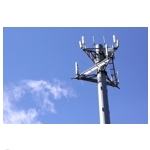 The 4G subscriber base–consumers connected to WiMAX and LTE mobile broadband networks–totaled 17.25 million and 320,000, respectively, as of the end of Q1 this year. That’s a jump of 32.7% quarter-to-quarter from the 13 million reported at the end of Q4 2010 for WiMAX. In 2011 WiMAX will add another 5.5 million, according to Maravedis’s latest 4G Counts Quarterly Report.
The 4G subscriber base–consumers connected to WiMAX and LTE mobile broadband networks–totaled 17.25 million and 320,000, respectively, as of the end of Q1 this year. That’s a jump of 32.7% quarter-to-quarter from the 13 million reported at the end of Q4 2010 for WiMAX. In 2011 WiMAX will add another 5.5 million, according to Maravedis’s latest 4G Counts Quarterly Report.
Maravedis expects LTE to start making up ground: 59 FDD-LTE and 3 LTE TDD networks to be up and running around the world by the end of this year, it forecasts. “There will be 305 million LTE subscribers by 2016, of which 14%, or 44 million, will be TD-LTE users and the rest (86%, or 261 million) will be FDD-LTE,” said Esteban Monturus, co-author of the report.
Additional spectrum being made available is helping spur 4G network deployments, though that’s been due more to GSM re-farming than “the digital dividend initiative,” according to Maravedis.
More than 10 countries may roll out commercial TD-LTE (Time Division Duplexing) networks or areas in 2011-2012 ahead of China Mobile’s announced deployment, the market research firm says.
The wider range of next-generation wireless network configuration options available to operators, including femtocells, Wi-Fi, small cells, repeaters, and distributed antenna systems, cuts two ways, Maravedis researchers point out. While this gives operators greater flexibility in terms of how they build and operate mobile networks, it also makes it more difficult to plan and invest for the future. “In this context trial and error is the only realistic way forward until enough experience is gained to establish best practices.” said Basharat Ashai, analyst at Maravedis.


